1.4 Identify interface and cable issues (collisions, errors, mismatch duplex, and/or speed)
I was talking about cables earlier. When two devices are connected via an Ethernet cable, they will evaluate the wiring between themselves and agree on a speed and duplex setting, in a process known as autonegotiation. In a half-duplex setting, only one device can transmit at a time; the other device must listen when the first one transmits. In a full-duplex setting, both devices can transmit and listen at the same time.
A 100BaseT connection could be either full duplex or half duplex. A 1000BaseT connection must always be full duplex.
An administrator can manually set an ethernet port on a switch or router to a specific speed and duplex setting but must then be careful to ensure that both the sending and receiving device have the same settings, or they will not be able to communicate.
There are two methods for terminating a cat5e/cat6/cat6A cable. The methods are known as 568A and 568B. Remember that an Ethernet cable contains four pairs of wires (colored as blue, orange, green, brown). The difference between 568A and 568B is that the position of the orange and green wires is swapped.
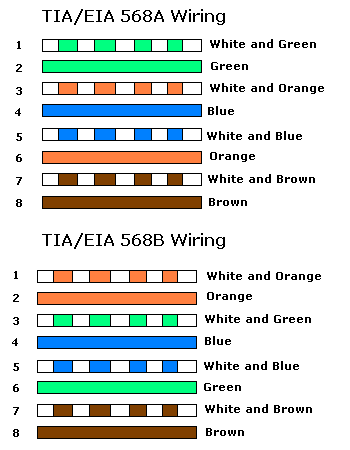
If we look at the side of a cat5e jack, we can see that the manufacturer has marked a color code for “A” style terminations and “B” style terminations. On the other side of the jack, we would see similar markings.
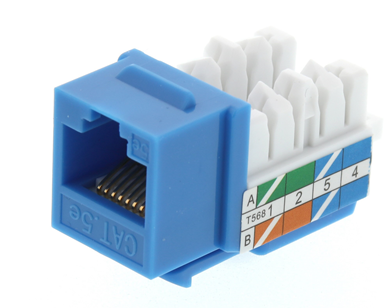
We should insert the wire into the correct colored slot on the jack or patch panel and then terminate it with a punch-down tool of the appropriate size.
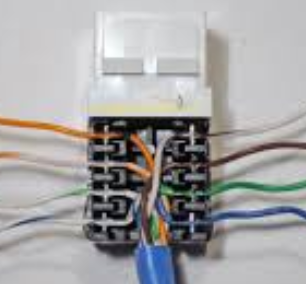
We could also terminate the cable to a male connector. The male connectors follow the same color code as the female connectors. We use a tool called a crimper to secure the wires inside the connector.
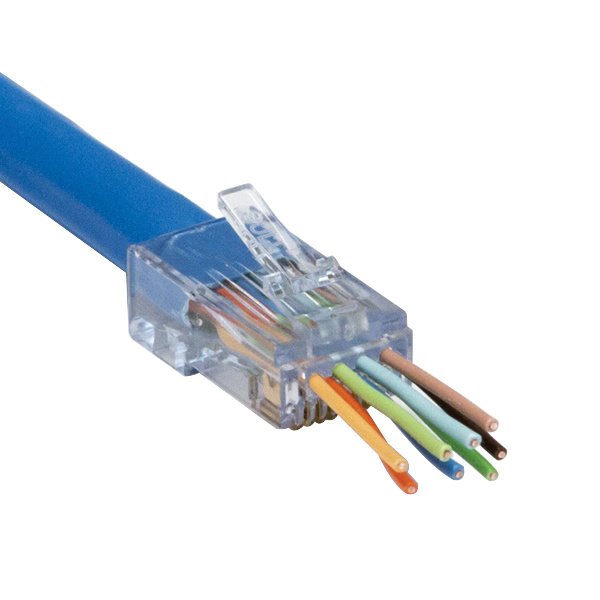
Both 568A and 568B are acceptable termination methods. A cable should be terminated with the same method on both sides. An organization may require the cable to be terminated using a specific method. Most organizations prefer 568B, and most governments prefer 568A.
If we terminate the cable in the same order on both ends, we call it a straight through cable. If we terminate the cable as 568A on one end and 568B on the other end, the orange and green pairs become crossed. This is called a crossover cable.
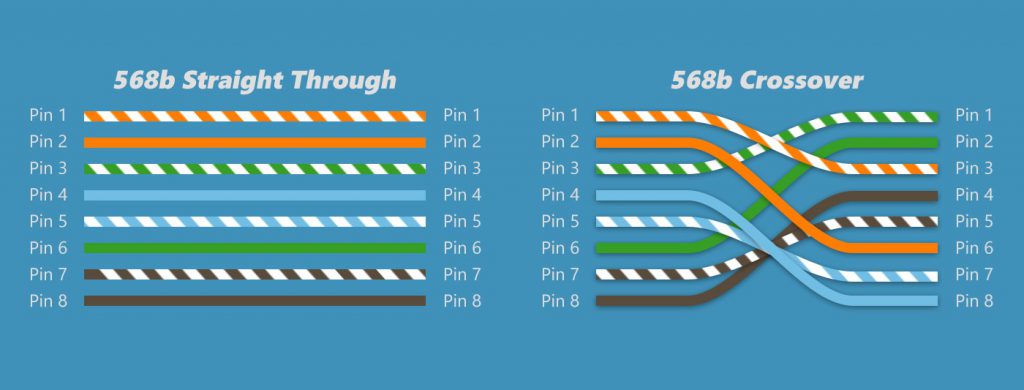
Why would we make a cross-over cable? Network devices usually use the orange and green pairs to communicate. A device like a switch transmits over the orange pair and listens on the green pair. A device like a computer transmits on the green pair and listens on the orange pair. If we connect a computer to a switch, collisions do not take place.
The device doesn’t know the color of the wire; it only knows the position of the wire. If you punched the blue wire in the orange wire’s spot, the device would communicate over the blue wire. Technically, a computer uses wires one and two to transmit data and three and six to receive data. A switch uses wires three and six to transmit data and wires one and two to receive data. Routers and wireless access points also use wires one and two to transmit data, which is why they can connect to a switch.
If we connect a computer to a switch, the switch will send data on wires three and six, which the computer will receive. The computer will send data on wires one and two, which the computer will receive.
If we want to connect two computers together or two switches together, they will try to talk on the same pair and listen on the same pair. No data will get through.
But if we use a cross-over cable, then one switch will transmit over the orange pair (wires one and two) and listen over the green pair (wires three and six). The other switch will transmit over the green pair (wires three and six) and listen over the orange pair (wires one and two). The wires “cross over” so that the traffic goes from position three and six to position on and two.
Technically, we don’t need crossover cables to connect switches together anymore. If two modern switches are connected via a straight through cable, they will immediately detect the collision and agree on which switch will use which wire pairs. This is called auto-mdix.
